Table of Contents
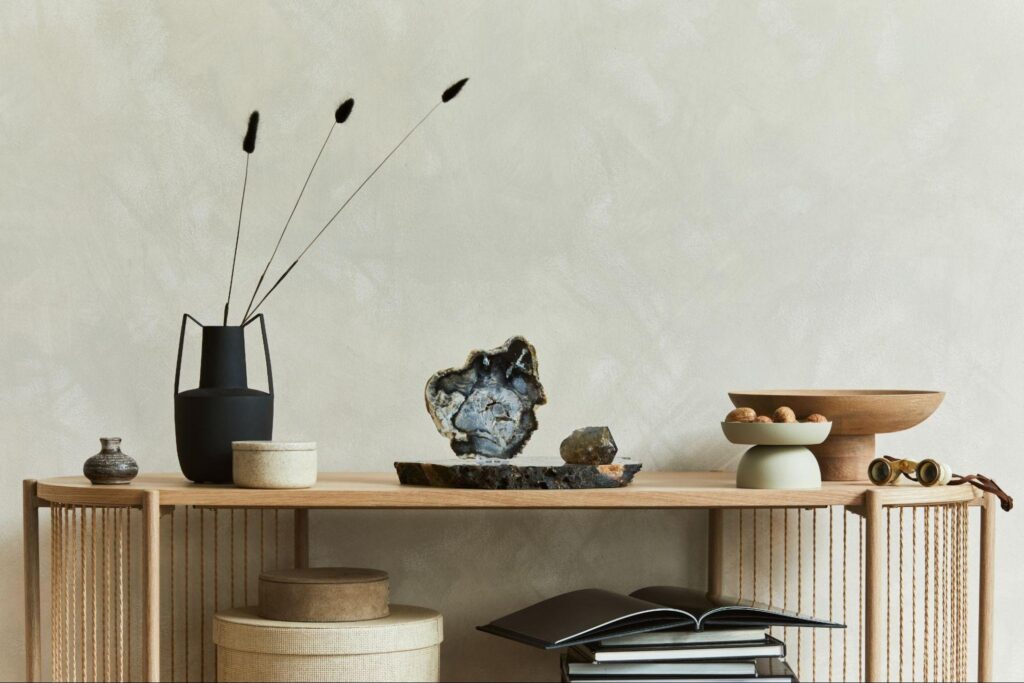
The Japandi design trend – blending Japanese minimalism with Scandinavian functionality – has captured attention for its serene, thoughtful approach to living spaces. While authentic Japandi pieces often command premium prices, you can capture this aesthetic’s essence without emptying your wallet. Here’s how to add japandi vibes to your home on a budget.
Embrace the Core Philosophy Before Shopping
Before purchasing anything, understand that Japandi isn’t just about looks – it’s a philosophy centered on intentionality and purpose. This mindset saves money by preventing impulse purchases that don’t serve your space well.
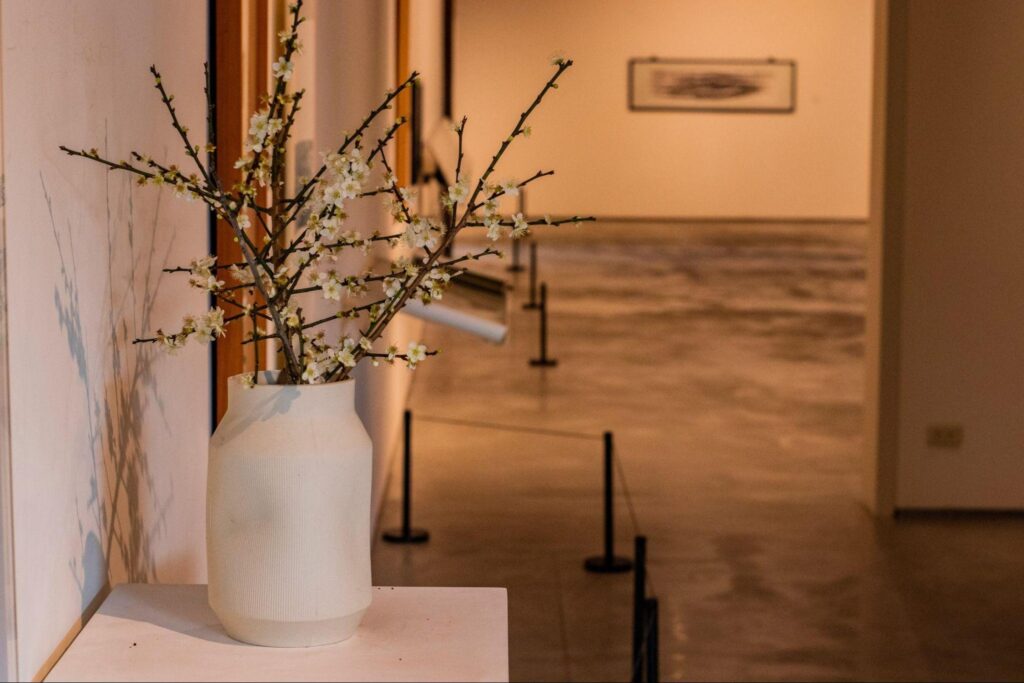
The foundational Japandi principle of “less but better” emphasizes quality over quantity. Rather than filling spaces with numerous inexpensive items, focus on fewer, more meaningful pieces. This approach naturally spreads your redesign budget further while creating more authentic results.
Start by decluttering – completely free yet transformative. Remove excess decorative objects, mismatched accessories, and anything that doesn’t serve a purpose or bring genuine joy. This simplification alone creates the breathing room characteristic of Japandi spaces.
Color Strategy: Nature-Inspired Neutrals
Japandi’s distinctive palette combines Scandinavian brightness with Japanese depth through nature-inspired neutrals. Creating this foundation costs significantly less than you might expect.
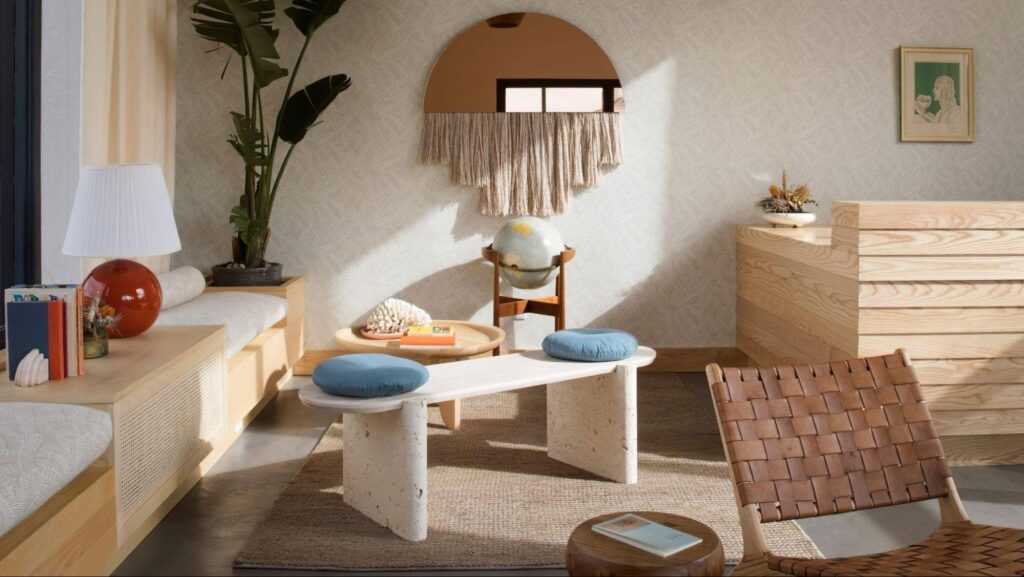
Paint delivers the biggest impact for minimal investment. Choose warm whites, soft taupes, or gentle grays for walls rather than stark bright white. For accent walls, consider deep charcoal or navy that echoes Japanese indigo traditions.
For textiles, focus on natural tones – oatmeal, unbleached cotton, and soft earth colors maintain the Japandi feeling without the designer price tags. These widely available neutrals typically cost less than trendy seasonal colors at major retailers.
Introduce subtle contrast through accessories in black, deep brown, or indigo. These darker elements provide the visual weight that distinguishes Japandi from purely Scandinavian minimalism. Look for simple ceramic pieces in these colors at mainstream home stores, where their basic forms often cost less than trendier styles.
Furnishings: Strategic Investments and Clever Substitutions
Furniture forms the foundation of Japandi style with its distinctive low profiles and clean lines. While authentic pieces can be investment-worthy, strategic alternatives deliver similar aesthetics for less.
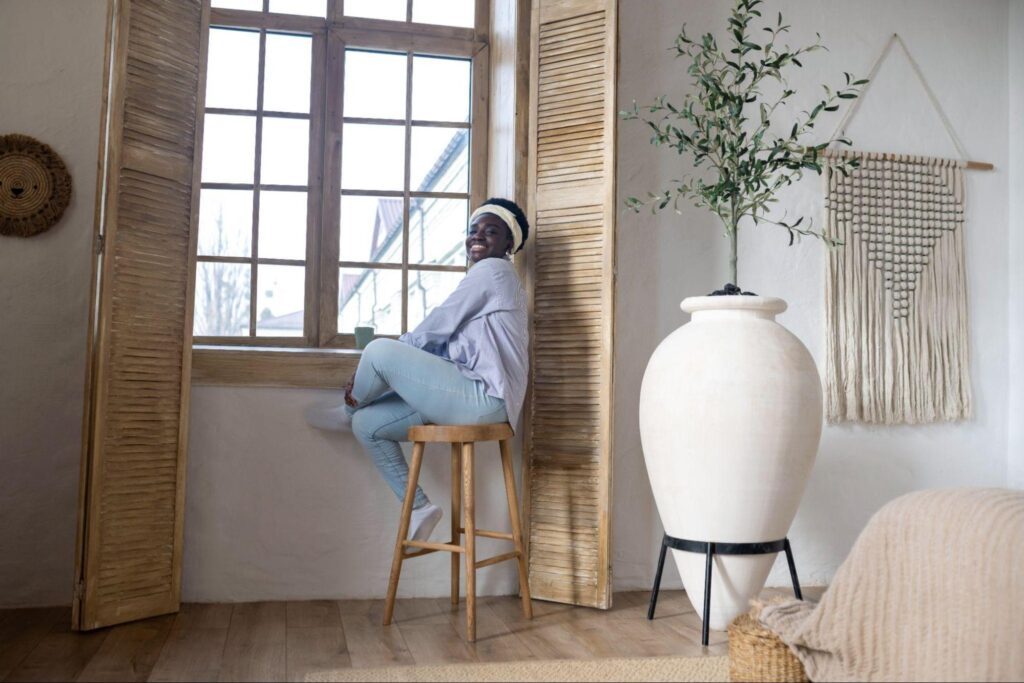
For the most visible furniture (like sofas or dining tables), consider mid-range pieces with clean, simple lines. IKEA’s Stockholm or Kivik series can provide Scandinavian silhouettes that work well in Japandi settings, especially when paired with more distinctive Japanese-inspired accessories.
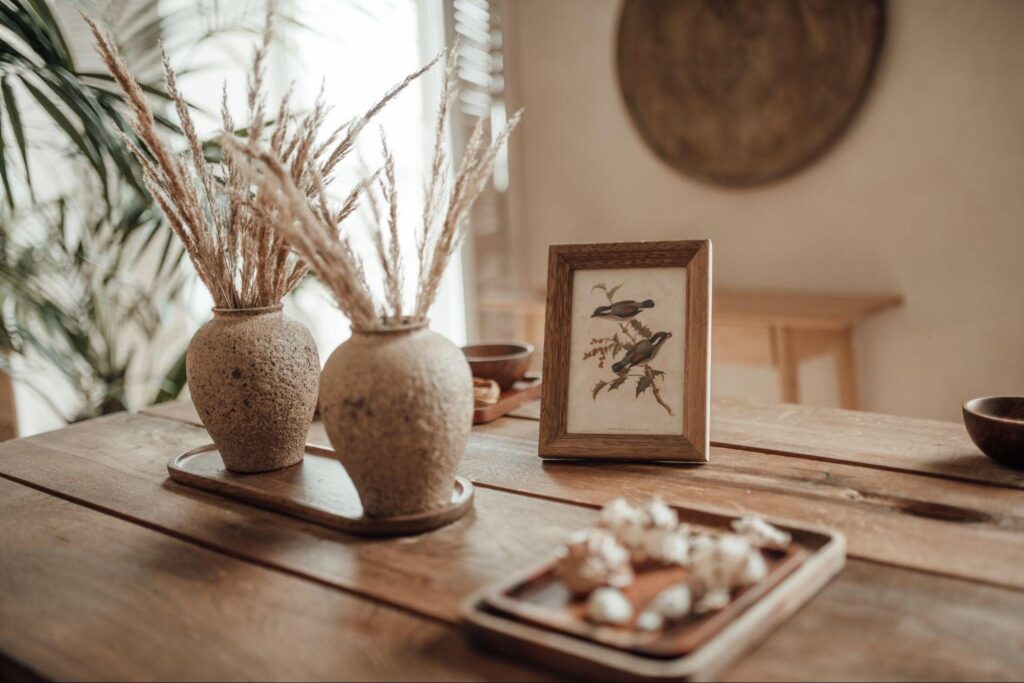
Create low-profile seating areas without specialty furniture by using floor cushions on low platforms. Simple wood platforms can be DIY projects or repurposed from existing furniture, while cushions in natural fabrics add comfort inexpensively.
Look beyond furniture stores to find affordable Japandi-appropriate pieces. Simple wooden stools from garden centers can serve as side tables. Basic wooden cutting boards become wall decoration when mounted vertically. These unconventional sources often offer raw, natural materials at lower prices than dedicated home stores.
Natural Materials Without Premium Prices
Japandi’s emphasis on natural materials doesn’t necessarily mean expensive exotic woods. Creative material choices deliver similar aesthetic benefits without the cost.
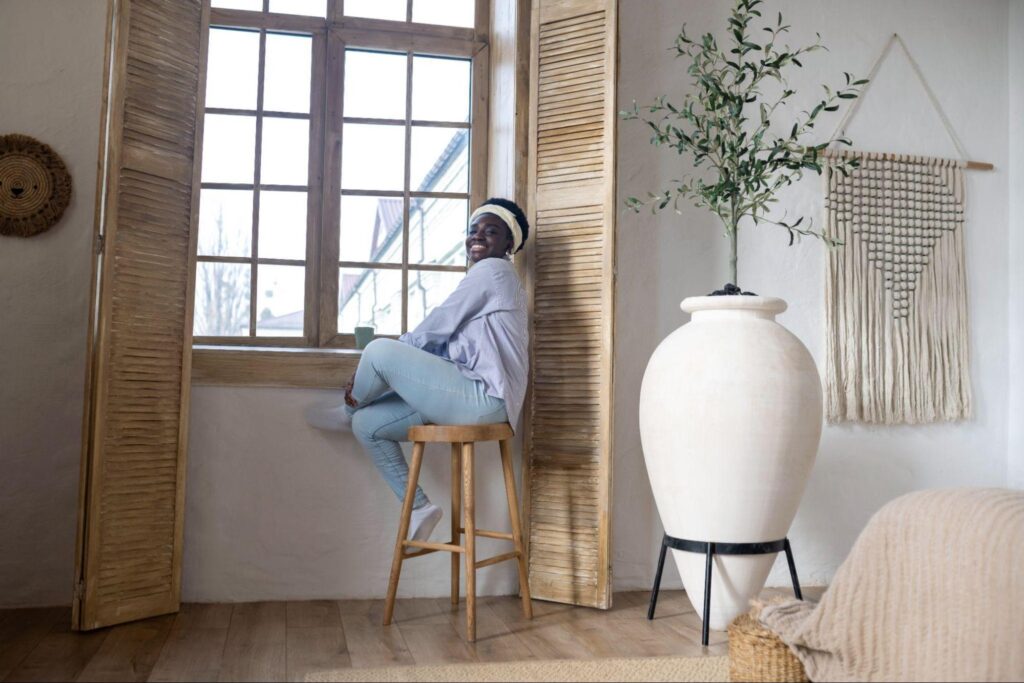
Bamboo offers exceptional value in bringing natural elements home. Bamboo blinds, trays, and decorative objects bring organic texture at accessible price points widely available at mainstream retailers and import stores.
For wood tones, look for unfinished or lightly finished pine, which offers the light, natural appearance crucial to Japandi without the cost of maple or oak. Simple pine shelving or tables can be lightly whitewashed for a more refined appearance that mimics more expensive wood.
The paper brings authentic Japanese elements inexpensively. Consider shoji-inspired paper lanterns, which provide gentle lighting characteristic of Japandi spaces for minimal cost. Plain rice paper can be mounted in simple frames to create art with authentic Japanese references.
Lighting Techniques That Transform Atmosphere
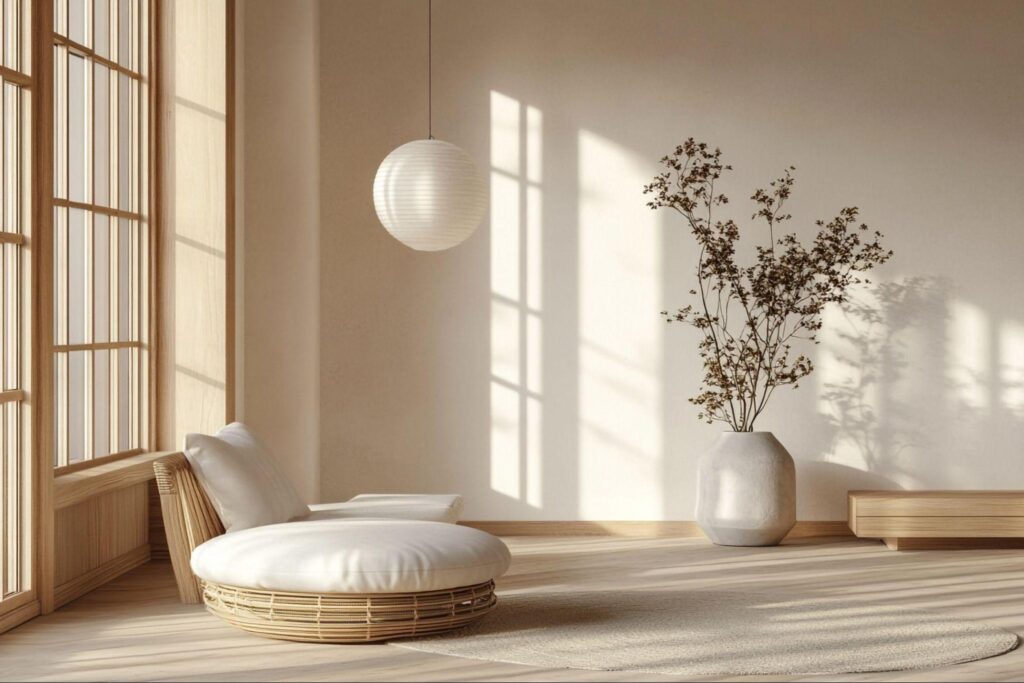
Japandi lighting emphasizes warm, diffused illumination that creates calm environments. This effect comes more from how you use light than from expensive fixtures.
Paper lanterns provide quintessentially Japanese lighting elements at remarkably low prices. Simple spherical designs start around $10-15 yet deliver sculptural presence and gentle illumination perfect for Japandi environments.
Position lights thoughtfully rather than relying on overhead sources. Simple ceramic table lamps with plain linen or paper shades placed at varied heights create the layered, ambient lighting characteristic of Japandi while costing less than statement pendants or chandeliers.
Consider natural light enhancement through strategic mirror placement. Positioning mirrors to reflect outdoor light amplifies natural illumination while maintaining the connection to nature central to Japandi design – all without increasing your electricity bill.
Bringing Nature Indoors Economically
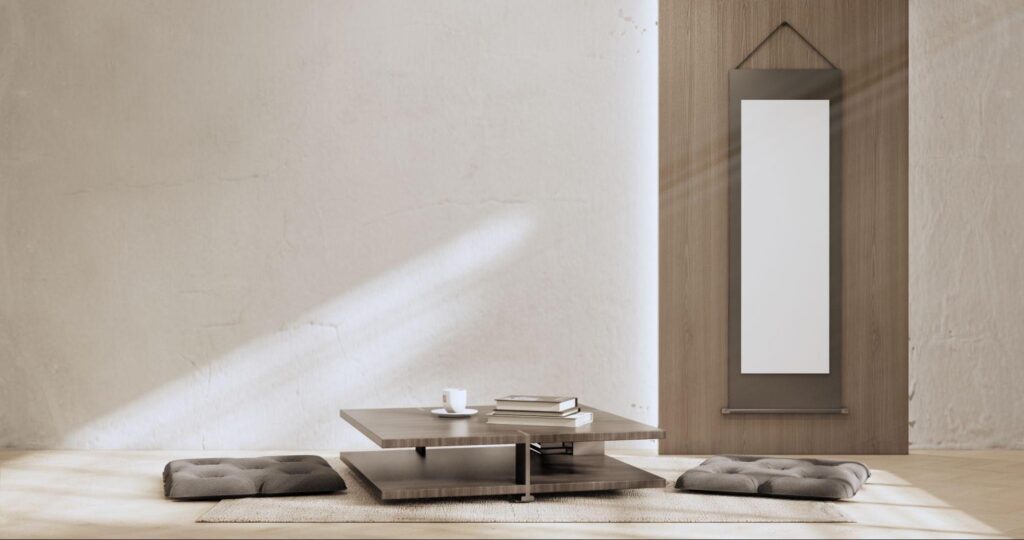
Plants play a crucial role in Japandi design, bringing life and natural elements into curated spaces. Fortunately, this category offers numerous budget-friendly options.
Focus on sculptural plants with distinctive forms rather than requiring variety. A single statement fiddle leaf fig has more impact than multiple smaller plants and requires less investment in decorative pots.
For plant containers, look beyond garden centers to alternatives like simple baskets, wooden boxes, or ceramic bowls you might already own. The Japandi aesthetic favors natural, understated containers over flashy decorative pots.
Foraged elements bring nature indoors for free. Interesting branches, stones, or dried natural elements gathered during outdoor excursions provide authentic natural elements with no cost beyond your time collecting them.
DIY Projects With Authentic Japandi Spirit
Some of the most budget-friendly and authentic Japandi elements come through simple DIY projects that honor the tradition of craftsmanship central to both Japanese and Scandinavian design.
Create wall art using the Japanese concept of wabi-sabi (finding beauty in imperfection). Simple ink washes on paper using diluted black paint or actual ink requires minimal artistic skill while creating meditative, imperfect compositions appropriate to Japandi spaces.
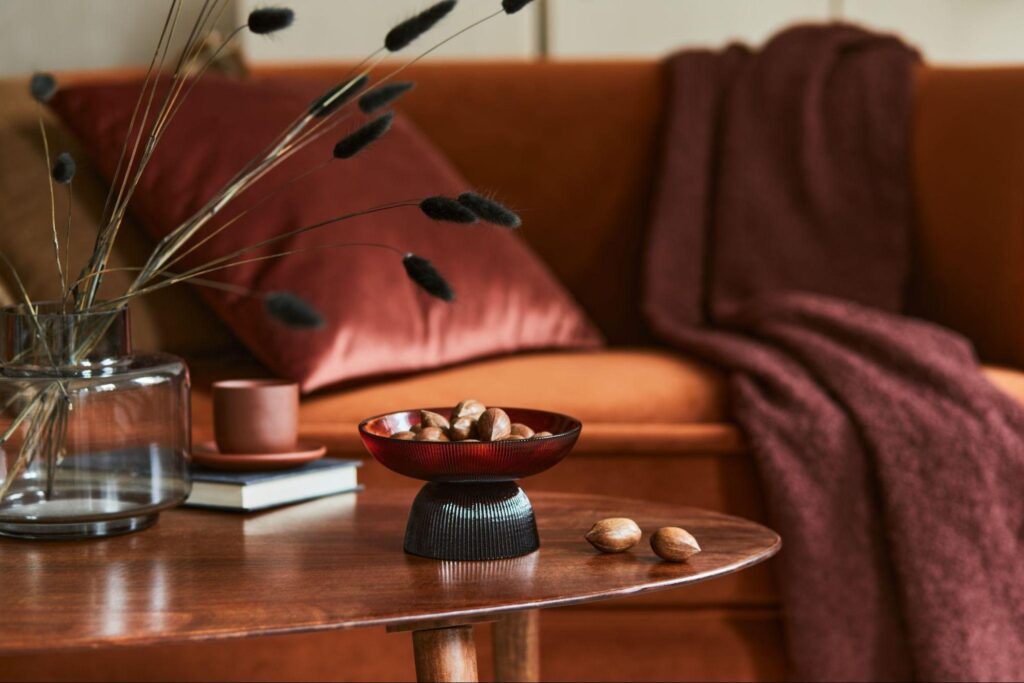
Transform basic wooden furniture with minimal effort. Sanding down varnished surfaces to reveal natural wood grain and then applying simple oil finishes creates the honest, tactile surfaces central to Japandi design without purchasing new pieces.
Consider learning basic visible mending techniques for textiles. This practice honors both Japanese concepts of repair as enhancement and Scandinavian sustainability principles while extending the life of existing items.
The most authentic approach to Japandi design isn’t about purchasing specific products but about cultivating a mindset that values simplicity, nature, and thoughtful curation. This philosophy naturally supports budget-conscious design by focusing on quality over quantity, appreciation of imperfection, and finding beauty in everyday objects. With these principles guiding your choices, creating a serene Japandi-inspired home becomes accessible regardless of budget constraints.

Hi, I’m Christian, a 43-year-old father of two and a lifelong DIY enthusiast. My workshop is where I spend countless hours experimenting, upgrading, and fine-tuning. Sharing my experiences and practical advice is my way of helping others create homes they love.




